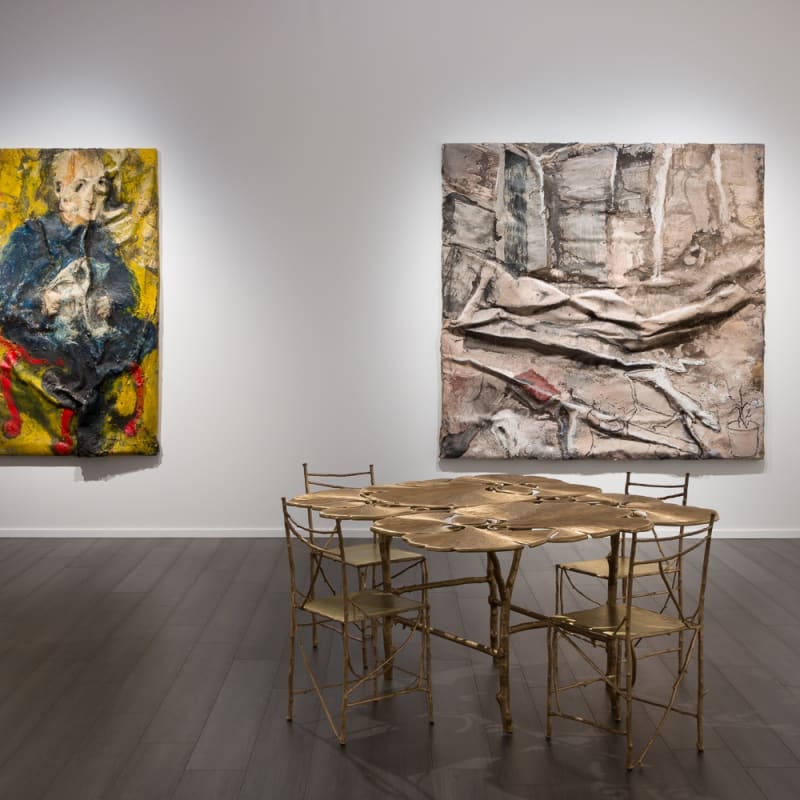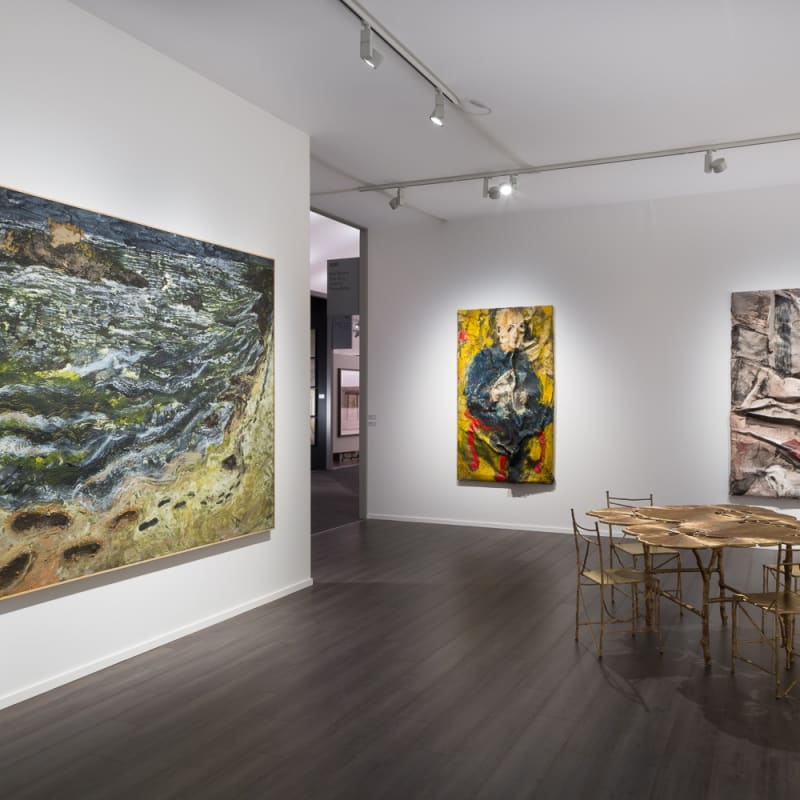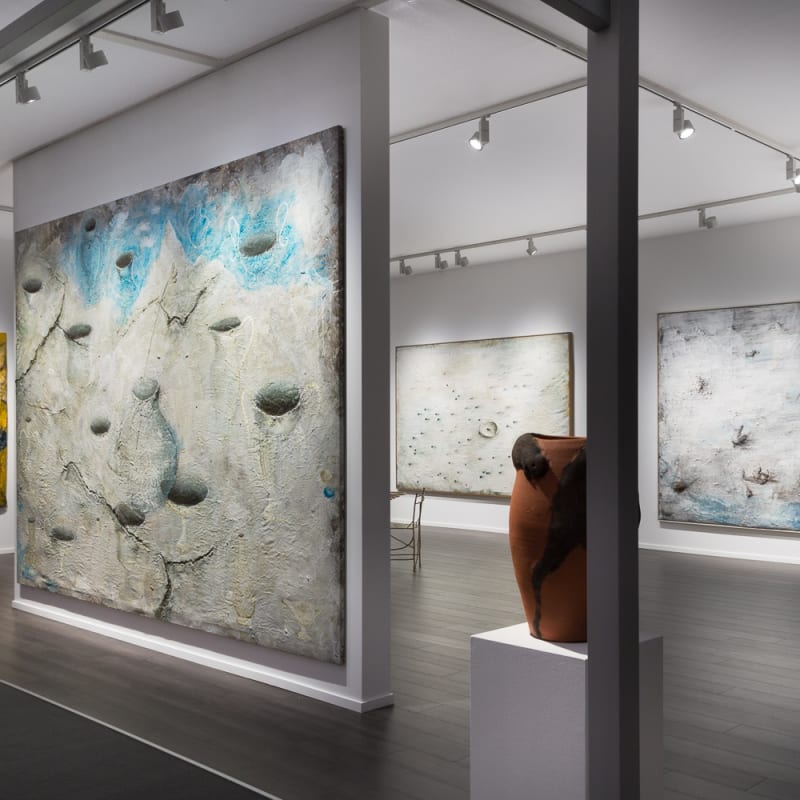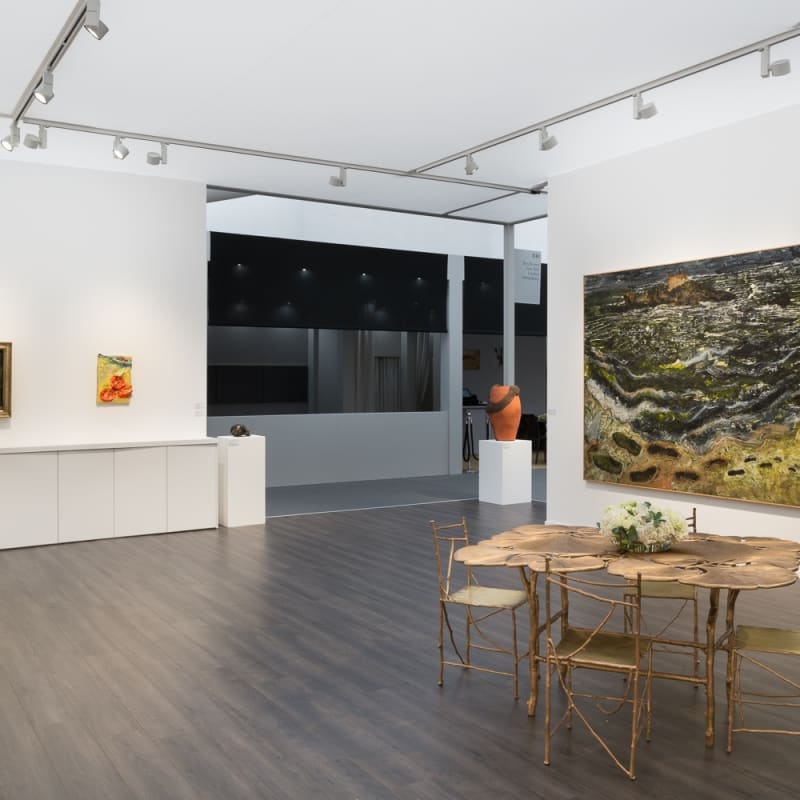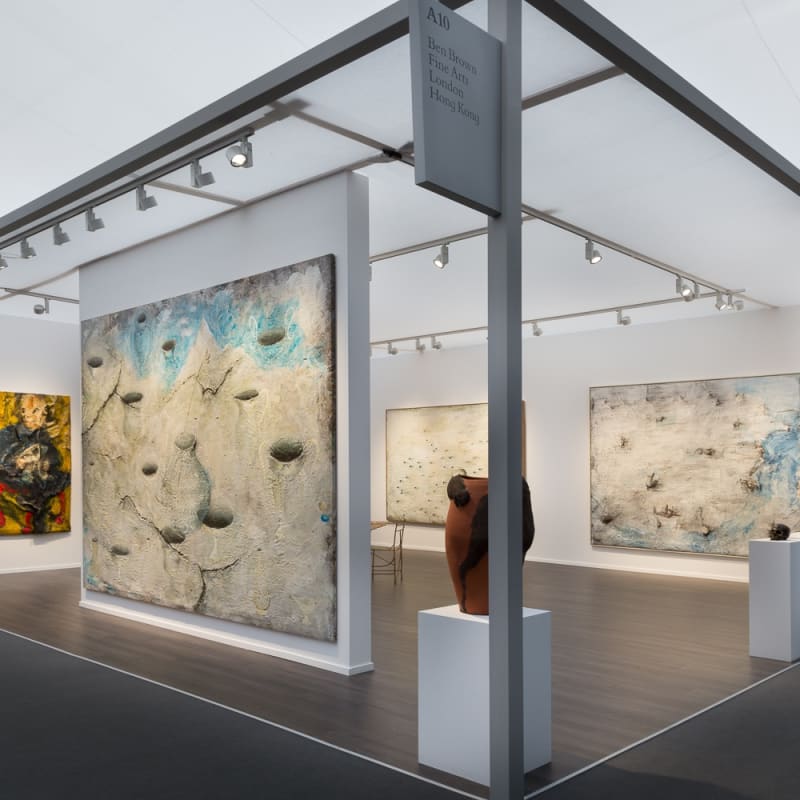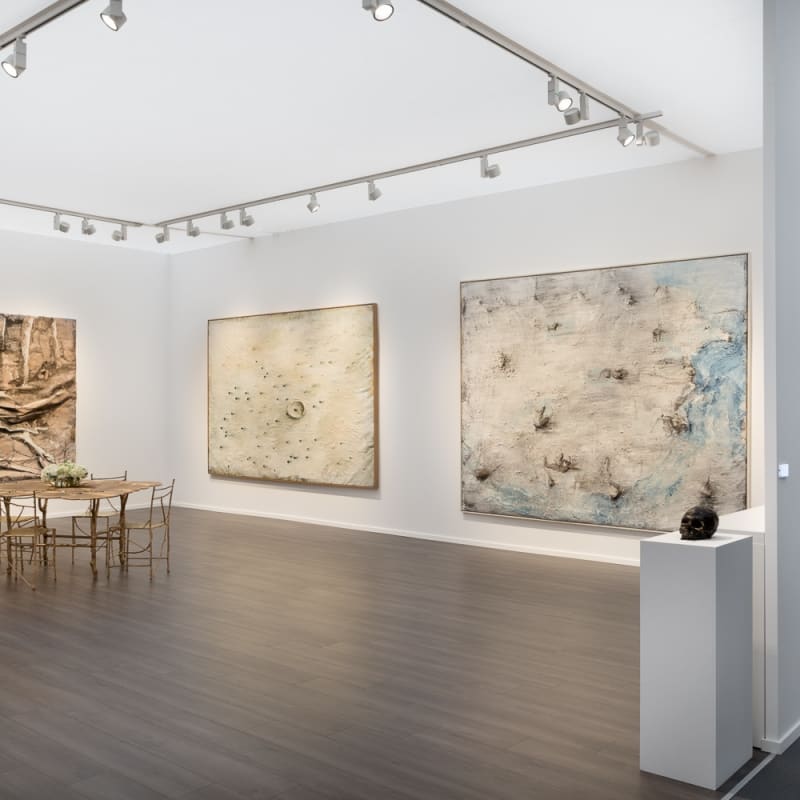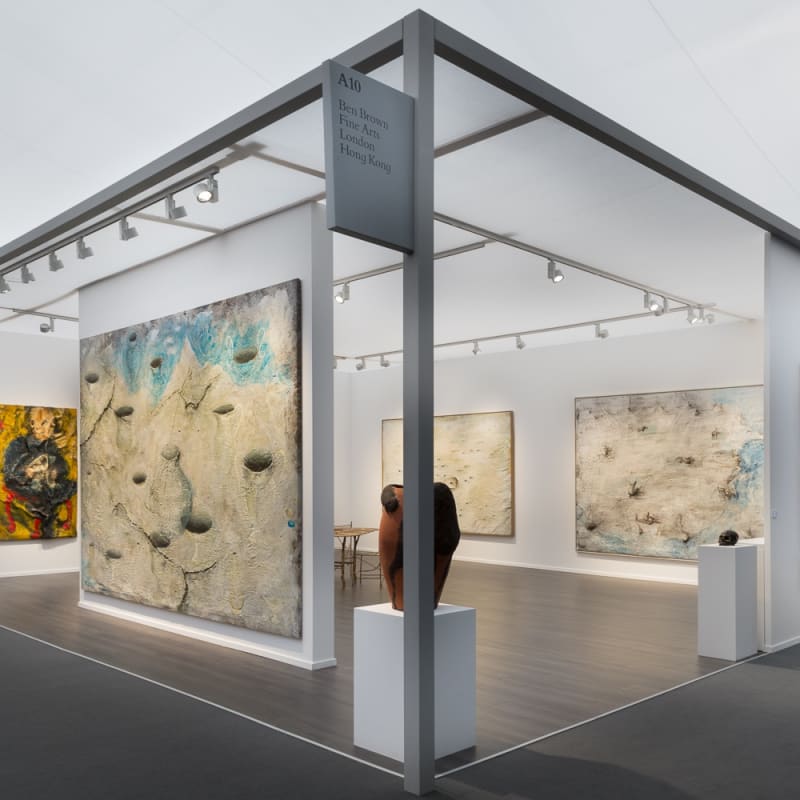Please CLICK HERE to view e-catalogue
Ben Brown Fine Arts is pleased to announce their participation at Frieze Masters this October. The gallery will present a solo exhibition of early work by Miquel Barceló, widely regarded as one of the most important living artists. This presentation focuses on the period from 1982 until 2000 - arguably the most significant period of Barceló’s career - and is a prelude to his major upcoming exhibition at the Musée Picasso, Paris (March 2016). The last substantial exhibition of Barceló’s work in London was at the Whitechapel Gallery in 1994.
For Barceló painting is an instinct, a visceral way of being and of relating himself to the world. This can be clearly observed in his works from the early 1980s(El Pintor damunt el Quadre,1982, and Autoportrait, 1985) in which he occupies a central position in the pictorial plane in a silent examination of the role of the artist.
Porto Corvo (1984) exemplifies a number of Barceló’s perennial themes: landscape, the ellipse (which will later feature prominently in his infamous bullfighting series) and the western Mediterranean traditions with which he maintains an intense and conflicting relationship. Produced during a four month period in which Barceló lived in Vila Nova de Milfontes, Portugal, he painted seascapes and boats in the open air, mixing paint with seaweed, sand and other materials found on the beach.
In the late 1980s Barceló gradually moved away from figurative representation towards a reduced narrative. While working in New York, he produced white paintings in which the image disappeared. Cracks, Forats et Rides (1987) is a prime example of this development. The holes, cracks, and negative forms create a space that is increasingly unreal.
At the end of 1987, internationally renowned and critically acclaimed, Barceló left for Africa, fleeing from the temptation of repetition and ease. This first voyage across the Sahara in 1988 was a critical turning point, which led to a significant change in his subject matter, his techniques and his way of translating into images the reality around him. Inspired by the scorched landscape, his work became ever more tactile and textural. His continued fascination with the physical process is evident in España Económica (1990), a reflection on the nature of Spain in which the country’s undulating terrain appears almost tangible. Of this work, Barceló notes ‘Spain could be seen in perspective from a dovecot, and everything was white as if covered in pigeon droppings…It was a miniature world, just like my pictures at that time.’
Barceló’s continued interest in material and texture is manifest in his investigations into the surface itself which began in 1993 with the first of his three-dimensional canvases (Atelier Sepia avec Modèle,1993, 3 Tomátigues, 1994, and Autoportrait au Bleu de Travail (Paris),1995). These starched canvases are closely related to his sculptural works which have been central to the artist’s oeuvre since the early 1990s. Complementing the paintings in the exhibition are a group of bronze and ceramic works (Pinocchio Mort, 1998, and Chameau,1999).
Ben Brown Fine Arts will be exhibiting at Stand A10


